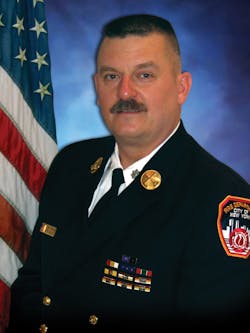The Fire Scene: Time Is Not on Their Side
I attended a conference recently in Portland, OR, and had the pleasure of sitting through a presentation that enlightened me on several issues. All the presentations were interesting, but the one topic I’m going to talk about here is “time.” We are all already aware of the impact and effect that time has on our operations, but the presenter said something that really made me think. He was talking about the many tasks and operations that we perform at structural fires and at one point talked specifically about donning the SCBA facepiece.
The presenter recounted an exchange that he had with a firefighter who was being timed on donning the facepiece. When he showed the firefighter how he could save 6 seconds, the firefighter’s answer was that 6 seconds was not much time and he could sacrifice that brief period with little negative impact. That answer woke me up. The presenter explained how he told the firefighter that those 6 seconds were not his! The time that it takes us to gear up, turn out, respond, stretch lines and start searching is not ours, it belongs to the folks waiting for us to perform!
So where can we start to save some time in our structural fire responses? What steps can be performed more quickly? What elements of our response can we possibly eliminate to get to the finish line more quickly? Let’s look at the chain of events that make up a response.
Time savers
The tones sound as an alarm comes in. THAT is the first place that almost all of us can shorten our response time. The moment you hear the tones or bells you should be moving. Most alert systems in firehouses provide for loudspeakers that blare out the alarm particulars. While you are moving toward the apparatus floor, you should listen to the alarm details. And, if you start to move and then hear that the alarm is not for your unit, you simply turn around and settle back into whatever you were doing.
Now the rig is rolling out the doorway. Just a few items here will improve the response. First, know where you are going before you start the trip. Another good reason to get down to the apparatus floor quickly is if a map or route card needs to be examined. Second, don’t put the pedal to the medal. It simply doesn’t work. It is also dangerous and irresponsible. If you turned out quickly and know where you’re heading, you are already ahead of the game.
So now you are approaching the scene. Smoke is visible and the dispatcher is advising you of numerous calls of flames from the house and possibly people trapped. This is where the rubber meets the road! I have personally watched many initial fire operations and I’ve seen many more online as well. Here are a few observations from those: DON’T WALK! I used to say don’t run, and you shouldn’t, but all I see lately is firefighters, officers and chiefs, strolling slowly from rig to rig or whatever they are doing. It almost looks like a training evolution where everyone knows there is nobody inside. Put some bounce in your step! This is NOT a drill. Someone’s home and belongings are on fire and rapidly being destroyed.
Next, know what you are going to do when you arrive. You KNOW it is a house fire. You KNOW you will be stretching the 1¾-inch attack line. You KNOW there are hydrants in that neighborhood. When you exit the apparatus, you should be steps away from going into operation. If you performed correctly back at the firehouse, you will be dressed in full gear when you step off the rig. As you can see these issues are all intertwined. One omission at the early stages of the response can result in dramatic amounts of time lost and wasted later in the event!
Train, train, train
What else do you think will allow us to get into operations at the scene faster? Training! It’s hard to write an article about anything that we do without including training. Training is the time we spend every day, every shift or every drill night that saves us (and them) time days later during a working fire. The material that is available for training firefighters today is probably 100 times greater than it was 10–20 years ago. Books, magazines, websites, lesson plans, videos, simulators, hands-on, blogs … I could go on and on.
If you are a chief, start or increase funding for quality training. If you are a company officer, lure, coax or drag your firefighters out to drill whenever you get two or three members together. If you are a firefighter, ask, ask and ask for more training. Let’s go!
About the Author
John J. Salka Jr.
Battalion Chief
JOHN J. SALKA JR., who is a Firehouse contributing editor, retired as a battalion chief with FDNY, serving as commander of the 18th battalion in the Bronx. Salka has instructed at several FDNY training programs, including the department’s Probationary Firefighters School, Captains Management Program and Battalion Chiefs Command Course. He conducts training programs at national and local conferences and has been recognized for his firefighter survival course, “Get Out Alive.” Salka co-authored the FDNY Engine Company Operations manual and wrote the book "First In, Last Out–Leadership Lessons From the New York Fire Department." He also operates Fire Command Training, which is a New York-based fire service training and consulting firm.

